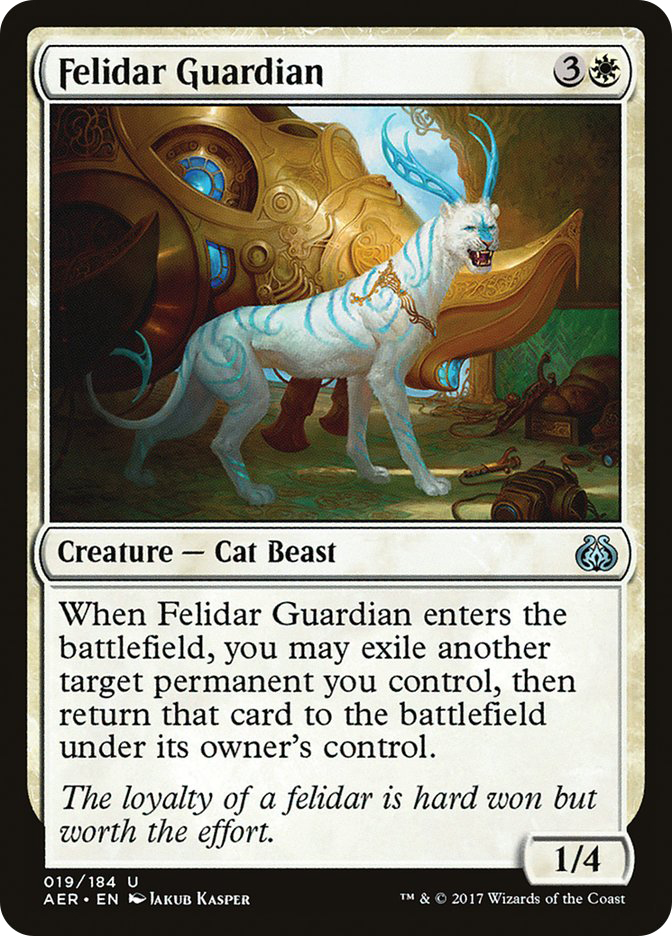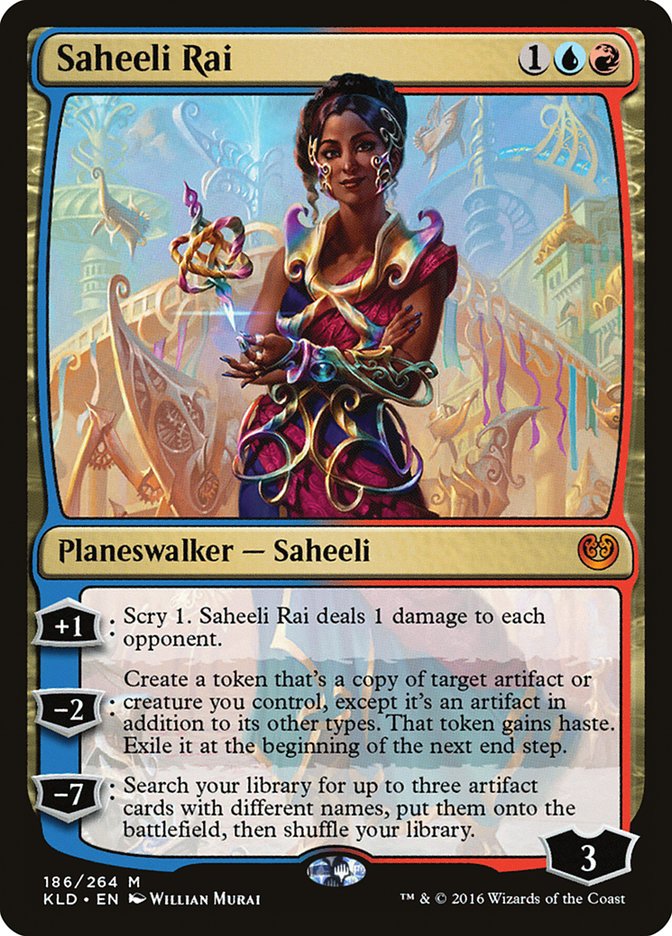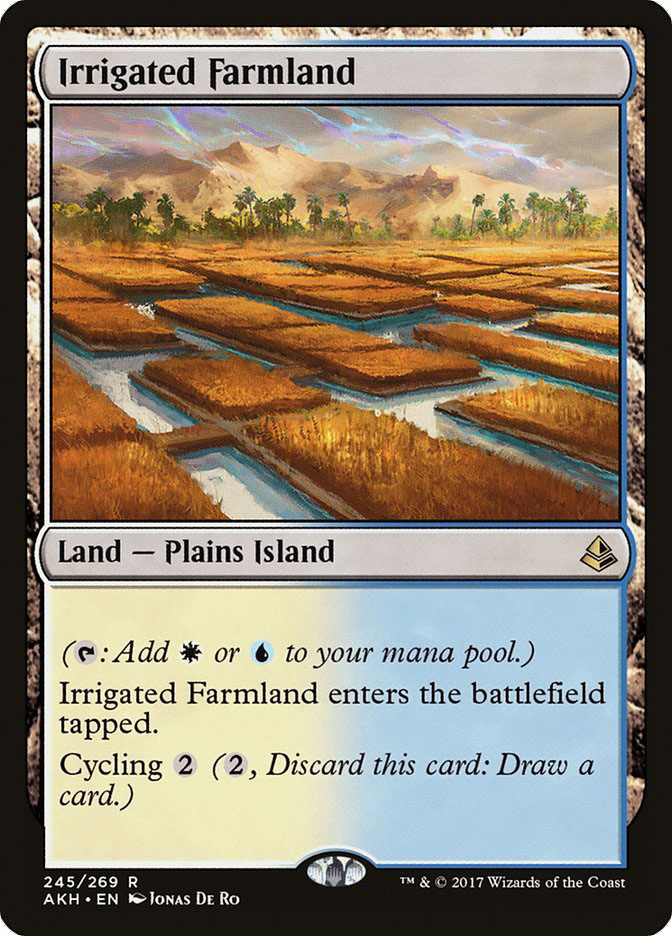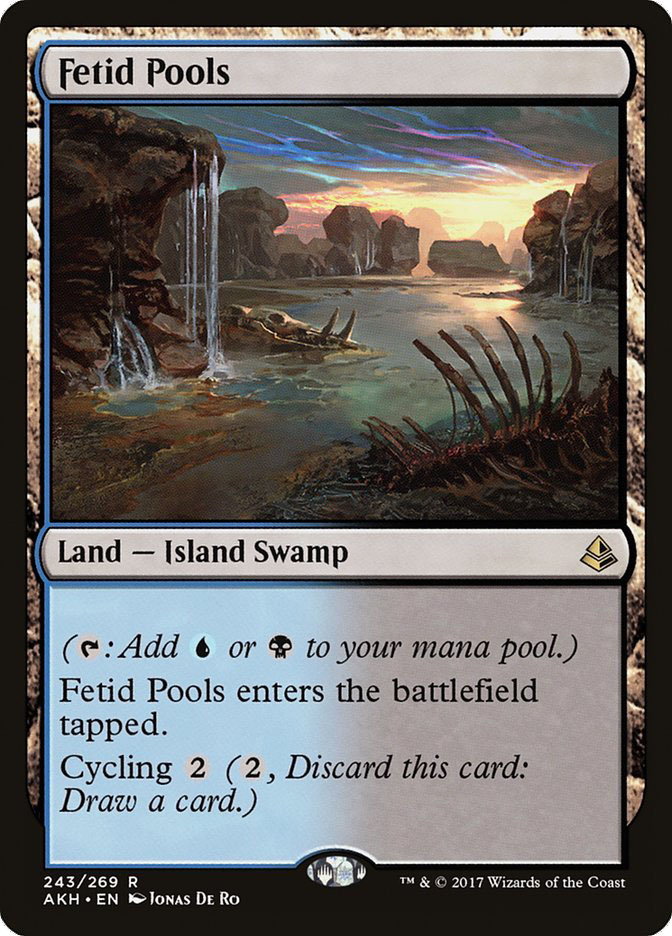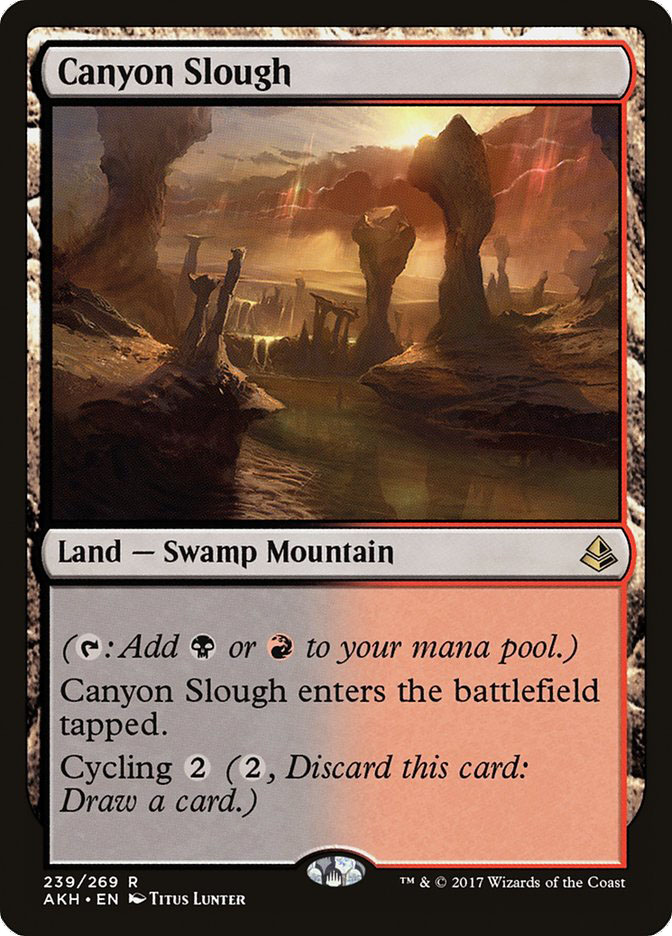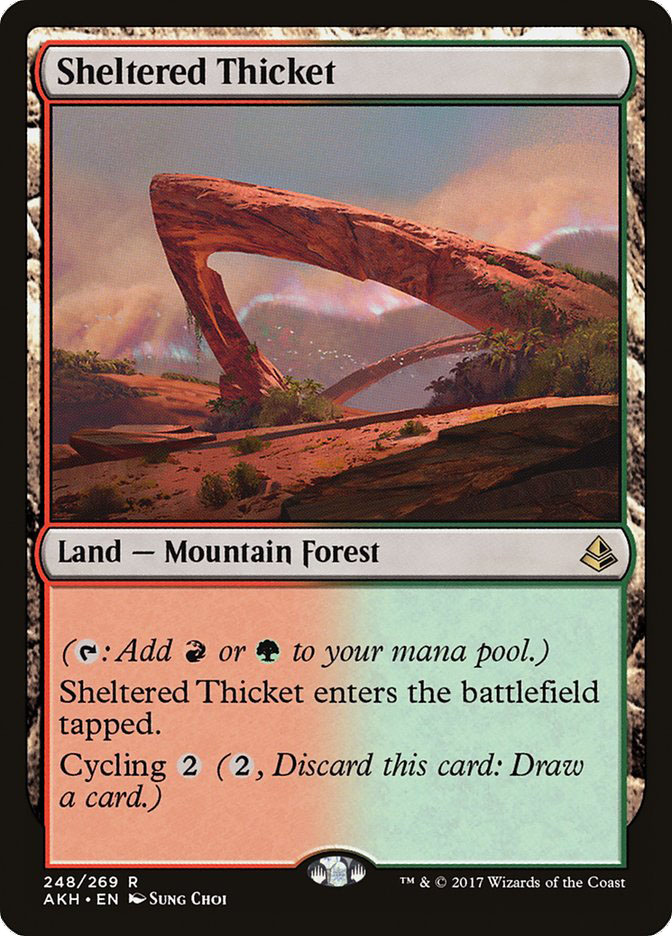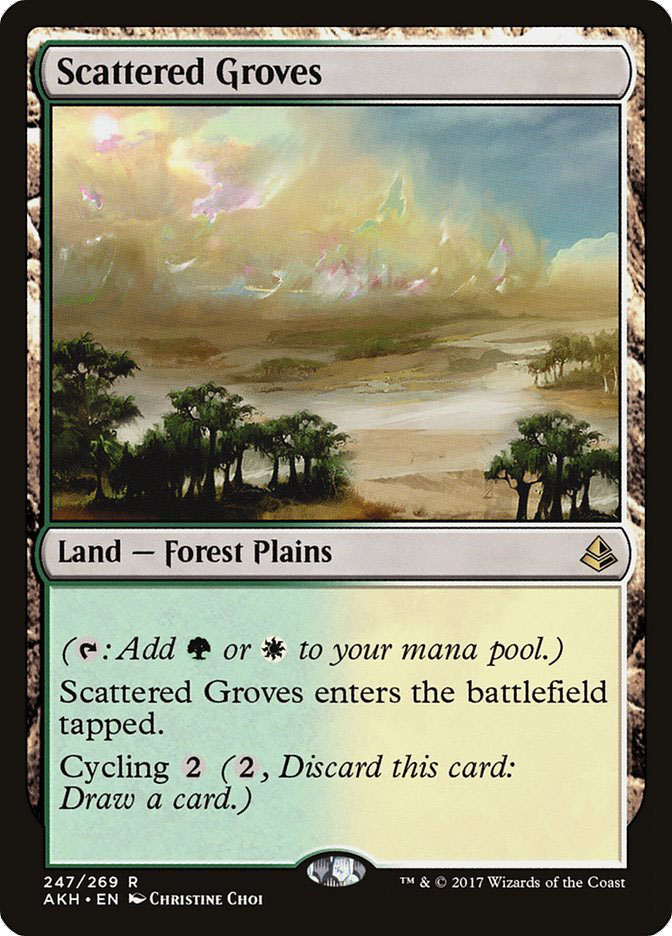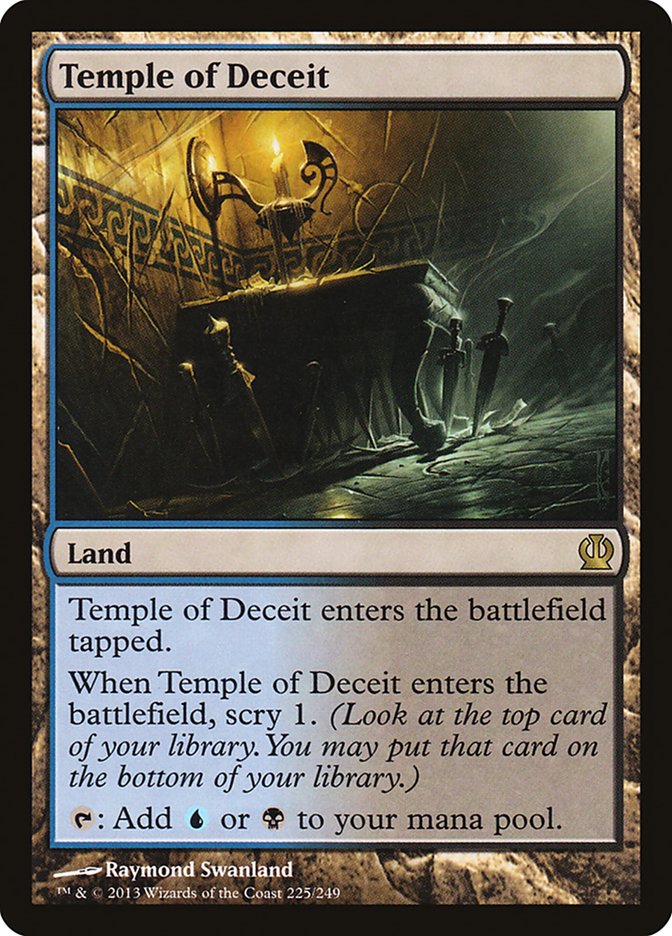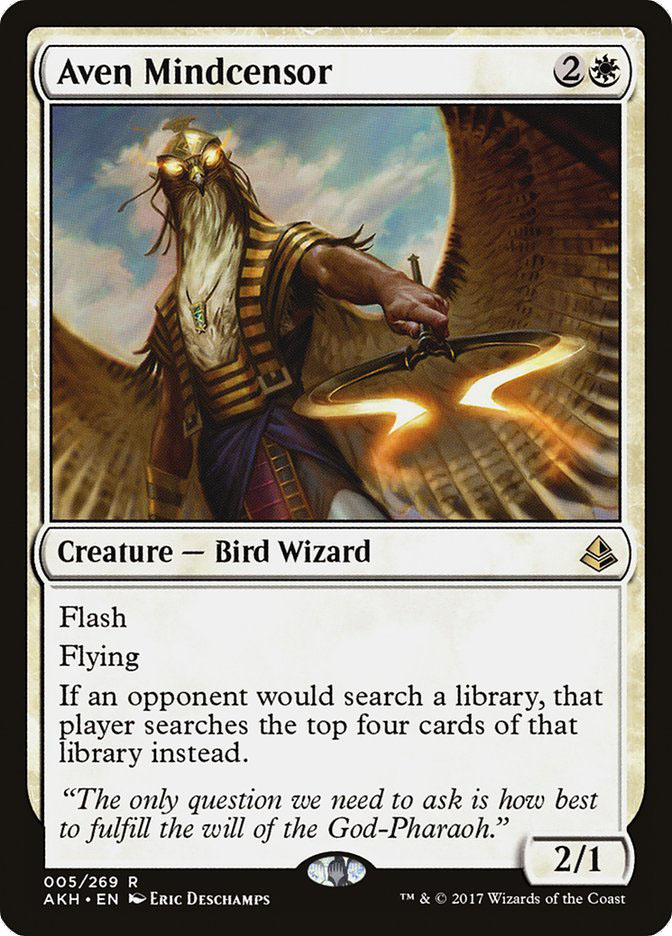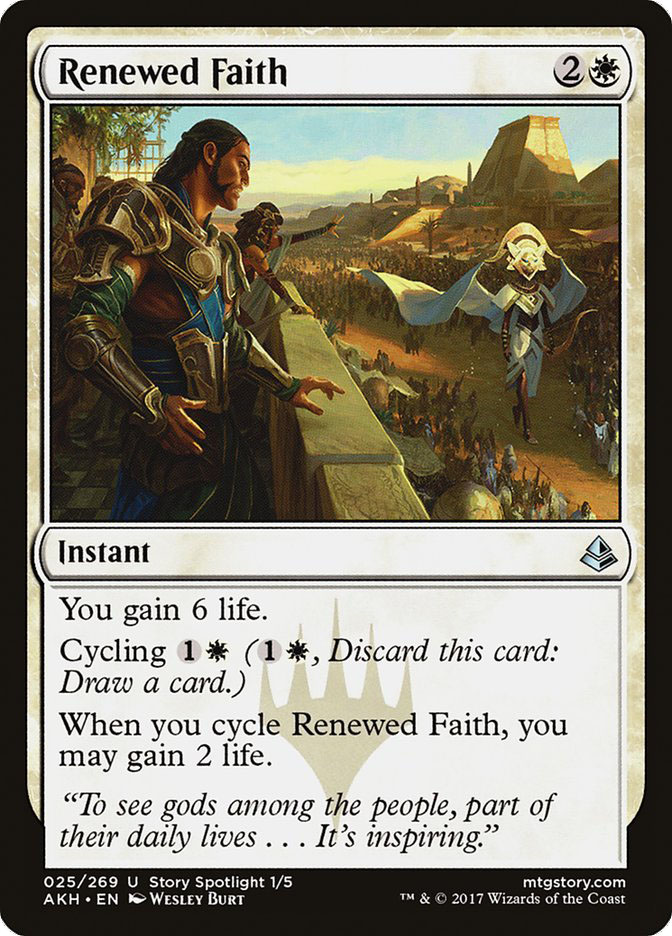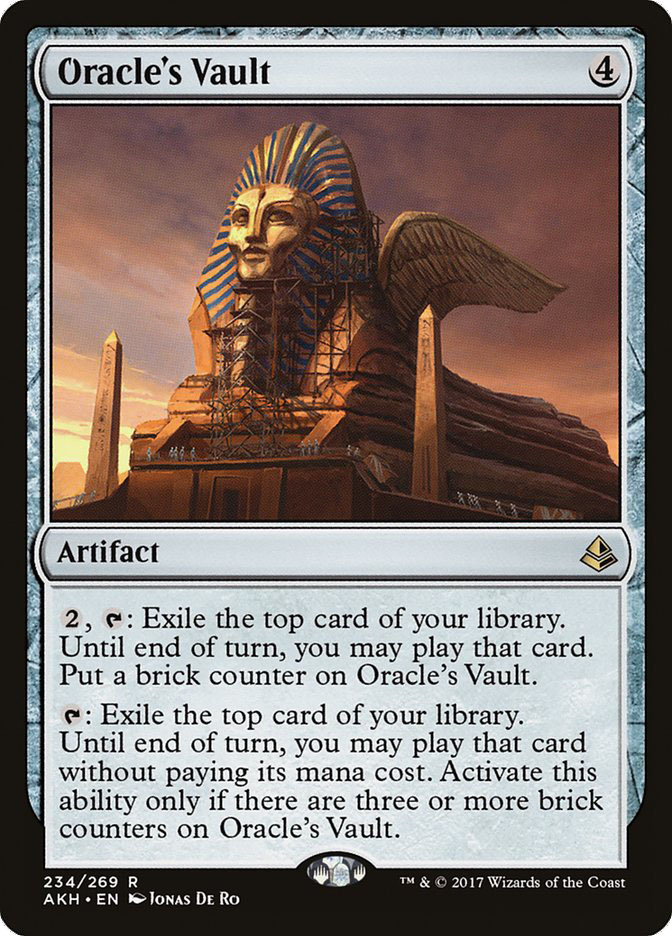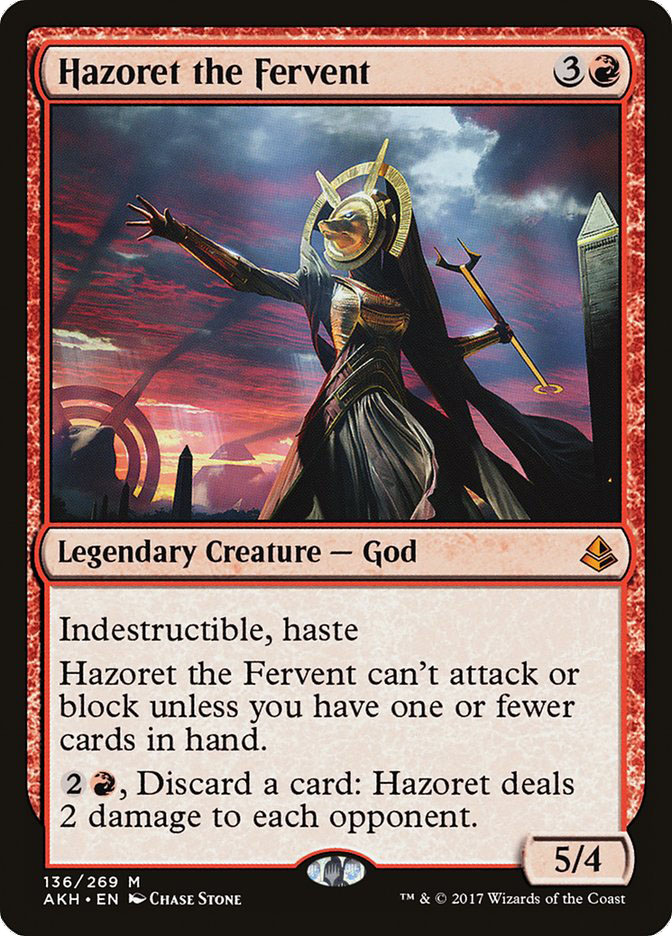All right, Amonkhet! Show me what you got!
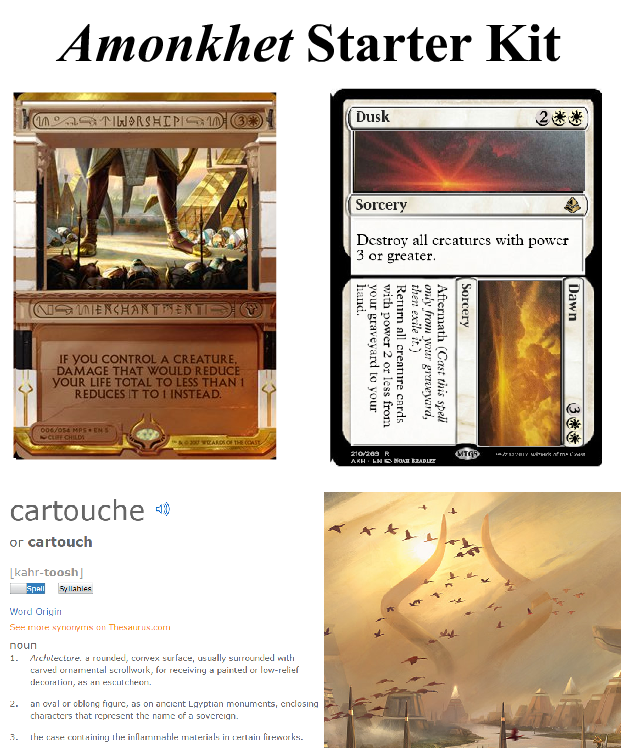
Uhh, all right, Amonkhet, what else you got!?
Cycling duals?
Gods like Hazoret the Fervent?
Brick tokens?
Full-art lands?
Not bad!
Overall Amonkhet is looking sweet. Today I’ll be taking a first look at Amonkhet’s juiciest offerings to see where we’re headed in the next sweet Magic set.
Standard, Bans, And Previews
Just a little preamble about bans, since we’re still living in a world with Felidar Guardian and Saheeli Rai still happen to be legal in Standard.
Another annoying little thing about having a broken combo in Standard is that it makes discussing new cards in relation to Standard a frustrating exercise.
The real issue is that any sort of speculation, theorycrafting, or testing is greatly hampered by the fact that we still could have bans with a much higher probability than usual.
Even though Amonkhet previews are starting to roll in, what’s actually going to be legal in the Standard format won’t be completely known until the next B&R announcement on April 24. With the Pro Tour happening on May 12, it really doesn’t leave all that much time for testing.
Even just writing about the preview cards right now is a little tricky. Should I be discussing a card in relation to its efficacy at disrupting a Felidar Guardian combo turn? Or perhaps its ability to kill Gideon, Ally of Zendikar, or if it’s able to compete as a four-drop against Gideon, Ally of Zendikar?
I know this isn’t an issue for everyone who isn’t embroiled in the competitive side of things, but it is yet another issue that tags along behind cards so powerful and format-warping that they might be banned.
Not the biggest in the world, just something competitive minded players looking to break Standard will have to deal with. The full set might be previewed, but what’s in the Standard format won’t be fully shown until we know if bans are going to happen.
Cycling Duals in Standard
The most powerful cards revealed so far are the cycle of cycling dual lands.
Easiest to compare to the Theros Temples as a starting point from lands in recent memory, but those with a little more history can just compare them with the past cycle of cycling lands like Secluded Steppe and Lonely Sandbar. Even further back, we had Remote Isle, Drifting Meadow, and so on.
Cycling duals aren’t completely unique, but they sure put a nice twist on an old favorite.
The cycling duals are a bit more obviously good than the Temples, which took some time before people caught on to their power. The thing is, tapped dual lands, even without the cycling text, are almost pretty playable.
So how good is cycling on a land?
Well, I’m no expert on cycling lands, but it seems pretty darn good.
In Standard, they fill the perfect role of being excellent on turn 1, when you’re happy to just play a tapped land, and excellent on turn 10, when you’re already land-flooded.
Of course, the risky part is when you’re constrained on mana and a land that enters the battlefield tapped is not going to help quickly enough and all you have is a bunch of pesky cycling duals.
Ideally, though, cycling duals should help prevent flooding, since your lands will give you a chance to draw spells and therefore allow you play a higher land count to prevent mana screw.
That’s one of the main effects I expect we’ll see from decks running a full set of cycling duals; I would imagine they’ll be running an extra land, or possibly even two, over what you’d normally see.
As odd as it might sound, it’s possible the cycling duals will have slightly less impact and be slightly less good than Temples did during their stay in Standard.
Temples were amazing in the early-game and good in the late-game as well, whereas cycling duals are fine in the early-game and excellent the longer the game goes. Temples were able to get value just by playing them while still acting as a land, whereas if you play an Irrigated Farmland at any point, you’ve basically just got an Azorius Guildgate, which makes it more Gate than great.
The real power of the cycling duals is when you’re actually wanting to cycle them, and that would usually come from a somewhat slower metagame.
Cycling duals will be fantastic in Standard, but maybe will perform just a hair below everyone’s lofty expectations.
Cycling Duals in Modern
So what about Modern?
Cycling duals can be searched up with fetchlands, which means fetchlands turn out to be relevant once again, whodathunkit?
Sheltered Thicket just happens to be a Forest and a Mountain, which is what really makes it potentially viable in Modern. That means you can not only search it up with a fetchland but also use it to trigger a Valakut, the Molten Pinnacle. Easy enough to imagine what that would look like:
Creatures (8)
Lands (28)
Spells (24)

Scapeshift seems like the perfect fit for some cycling duals.
Need Mountains to function? Check.
Already have a high density of lands? Check.
Very important to dig for a few key cards? Check.
Looking for ways to mitigate the occasional land flooding? Check.
Fine playing a tapped land and doing nothing turn 1 sometimes? Check.
Let’s continue to jam a bunch of cycling duals into Modern decks.
Creatures (5)
Planeswalkers (4)
Lands (25)
Spells (26)

Comparing Irrigated Farmland to Celestial Colonnade is quite the big ask.
Honestly, though, as great as Celestial Colonnade is, Irrigated Farmland doesn’t look too bad next to it.
Having a land that can also do an impression as “Think Once” is a nice option to have.
Once again we aren’t in a hurry to be casting spells on turn 1, which means we can afford to have a fair number of tapped lands.
It’s interesting how cycling duals will play out, in that you want to be fetching Irrigated Farmland over Hallowed Fountain in the early-game if you’re low on land and looking for more; you’d prefer to draw Hallowed Fountain since it can enter untapped immediately. Conversely, in the late-game you’d prefer fetching Hallowed Fountain or basic lands to thin your deck and want to naturally draw Irrigated Farmland so you can cycle it.
Creatures (24)
- 3 Golgari Thug
- 4 Stinkweed Imp
- 4 Narcomoeba
- 1 Scourge Devil
- 4 Bloodghast
- 4 Prized Amalgam
- 4 Insolent Neonate
Lands (21)
Spells (15)

The next big question mark for cycling duals is about synergy with Life from the Loam, so why not check out the Tier 1 deck that’s already playing it?
Sheltered Thicket and Canyon Slough actually feel like they fit right at home in Dredge.
Drawing a card already happens to be something that the deck likes doing, since that’s what makes the Dredge magic happen, so being able to just cycle them is already pretty reasonable.
The real appeal is that you’ll be Dredging up most of your deck and dumping a couple of copies of
Sheltered Thicket and Canyon Slough in the graveyard. Then you’ll be able to get them back to hand with Life from the Loam.
That turns Life from the Loam into card draw, which of course can allow you to Dredge more, which allows you to get more Life from the Loams, and so on. Isn’t the Cycle of Life from the Loam beautiful?
It’s the Cyyyyyyclllllle of Life!
That covers some of the decks that might be looking to really take advantage of the cycling duals, but it’s also possible that midrange Modern decks will want a slice of the Cycle action.
Maybe Sheltered Thicket or Canyon Slough is worth tossing in as one- or two-of in Jund Midrange.
Cycling duals certainly seem like might do a good job of filling out your deck when you’re looking a card that’s “half a land” and “half a spell.”
Right now cycling duals are the major attraction this preview season, but let’s take a quick look at what else we’ve got.
A good proactive answer-type card that I like having around as an option in the format.
I love cards that generate a little bit of value while drawing a card. Nowadays I’m not so sure this enough to keep up the tempo of gameplay, but I wish it were.
Kind of the same thing Aetherworks Marvel is doing, just much, much worse and much, much more stylish. If you end up playing this card and don’t make it to three brick counters, it’s your own damn Vault.
Love it. Sarkhan, the Dragonspeaker is a card I’ve had some success with in the past, and Glorybringer’s Exert is basically just the first two abilities of Sarkhan, the Dragonspeaker activated at once. Glorybringer is vulnerable to removal (dies to Doom Blade, ho-ho-ho), but it’s not hard to imagine scenarios where Glorybringer eats a creature, smacks the face, and then still needs to be dealt with before it all happens again.
Five power of indestructible attack seems incredibly difficult to deal with. It just keeps smashing turn after turn while also having the option of being able to spit out the occasional increments of two damage. Yup, Gideon, Ally of Zendikar seems great.
Oh, and Hazoret the Fervent seems okay too.
Seriously, though, Hazoret the Fervent is powerful and probably worth trying to empty your hand by turn 4…if you’re playing an aggressive deck that doesn’t have any better four-drops already.
That’s it for today. I’ll see you next time with more Amonkhet previews!


